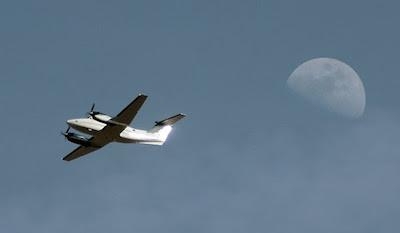Timely Reminders As Fall Flying Season Gets Underway
The FAA and the GA community’s national #FlySafe campaign helps educate GA pilots about the best practices to calculate and predict aircraft performance and to operate within established aircraft limitations.

A Loss of Control (LOC) accident involves an unintended departure of an aircraft from controlled flight. LOC can happen when the aircraft enters a flight regime that is outside its normal flight envelope and quickly develops into a stall or spin. It can introduce an element of surprise for the pilot.
In a recent 10-year period, there were more than 1,200 fatal loss-of-control accidents. Many of those events occurred in the approach phase of flight, and many of those accidents resulted from an unstabilized approach or a failure to go around.
Stabilized approaches are important. A constant speed and consistent descent rate will get you to a smooth landing.
For instrument approaches, you will want to be stabilized no lower than 1,000 feet above the runway, on the correct flight path to touchdown. You’ll want to maintain the glideslope if you’re landing on a precision approach runway, or not more than a 1,000 foot per minute rate of descent for non-precision approaches.
You’re stable if you have to make only small corrections in pitch, heading and power to maintain the path. If the wind is gusting, you can add some speed to compensate, but no more than half of the gust factor.
If you’re not stable by the time you descend to 1,000 feet, you’ll want to go around and set up a more stable approach.
VFR approaches are very similar, except that you can get a little closer to the ground before making a go-around decision. If you are flying a pattern, you need to be stable on final, in landing configuration with the landing checklist complete. If you’re not ready by 500 feet, go around.
Excessive speed, high altitude and the need to maneuver can all contribute to a de-stabilized approach. If you enter the pattern at 150 knots or just above stall speed, or 1,000 feet above pattern altitude, your stabilized approach will be difficult.
If the pattern is busy, you may feel pressure, even from ATC, to land before you are ready. If that’s the case, exercise your pilot-in-command responsibility, say “unable” and go around.
There’s nothing wrong with saying “unable.” It’s better to be safe.
When go Go Around:
- If you’re at or below 1,000 feet instrument flight rules, or 500 feet visual flight rules, and your approach isn’t stable, it’s time to go around.
- If your runway is out of service, or if traffic on the runway won’t be clear before you get there, go around!
The earlier you make the decision to go around, the easier it will be. Stick with your decision. Changing your mind will lead to destabilization and a difficult recovery.
The FAA reminds all pilots to:
- Plan to miss or go around. Know where and when you’ll make the decision.
- Pre-set your frequencies. Set your navigation and communications radios ahead of time.
- Manage distractions. Maintain a sterile cockpit.
- Practice missed approaches and go-arounds. Fly a missed approach at least once every quarter. Go around, re-enter the pattern and practice collision avoidance.
- Seek regular refresher training.
Message from :
"The FAA and industry are working together to prevent Loss of Control (LOC) accidents and save lives. You can help make a difference by joining our #Fly Safe campaign. Every month on FAA.gov, we provide pilots with Loss of Control solutions developed by a team of experts — some of which are already reducing risk," said Acting FAA Administrator Daniel Elwell. "I hope you will join us in this effort and spread the word. Follow #FlySafe on Twitter, Facebook, and Instagram. I know that we can reduce these accidents by working together as a community."
(Source: FAA. Image provided)
 ANN's Daily Aero-Term (04.26.24): DETRESFA (Distress Phrase)
ANN's Daily Aero-Term (04.26.24): DETRESFA (Distress Phrase) ANN's Daily Aero-Linx (04.26.24)
ANN's Daily Aero-Linx (04.26.24) Airborne 04.22.24: Rotor X Worsens, Airport Fees 4 FNB?, USMC Drone Pilot
Airborne 04.22.24: Rotor X Worsens, Airport Fees 4 FNB?, USMC Drone Pilot Airborne 04.24.24: INTEGRAL E, Elixir USA, M700 RVSM
Airborne 04.24.24: INTEGRAL E, Elixir USA, M700 RVSM Airborne-NextGen 04.23.24: UAVOS UVH 170, magni650 Engine, World eVTOL Directory
Airborne-NextGen 04.23.24: UAVOS UVH 170, magni650 Engine, World eVTOL Directory



